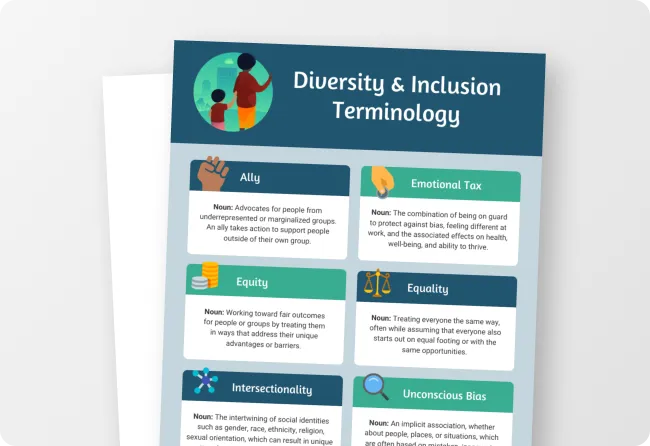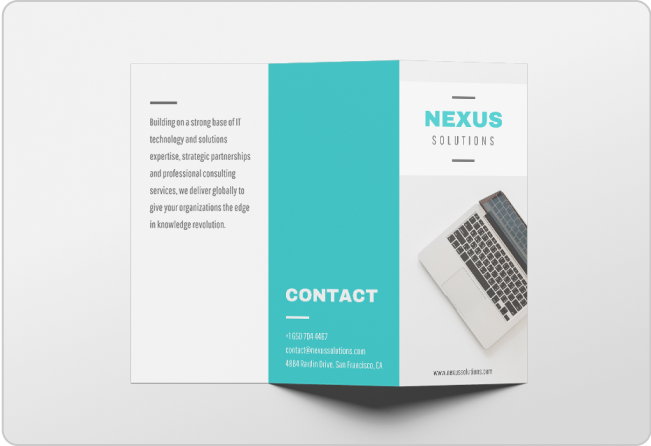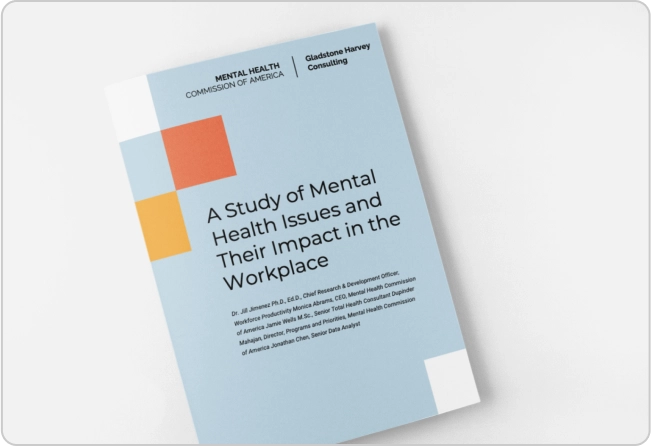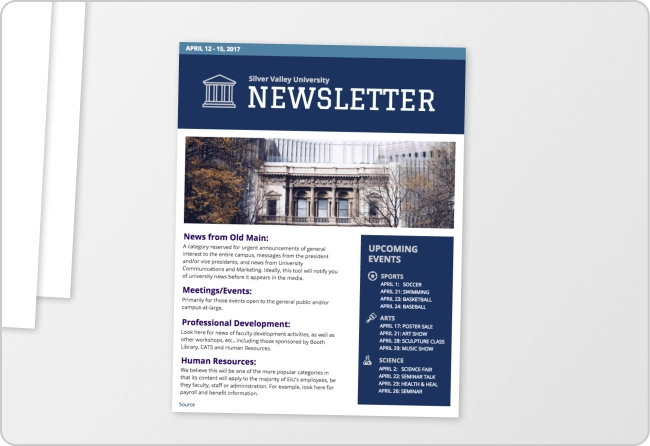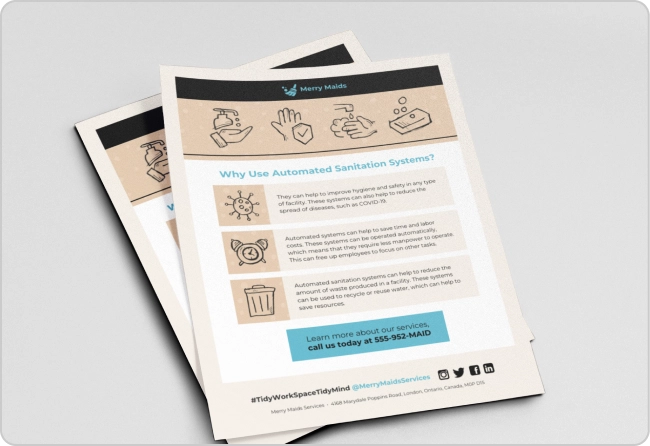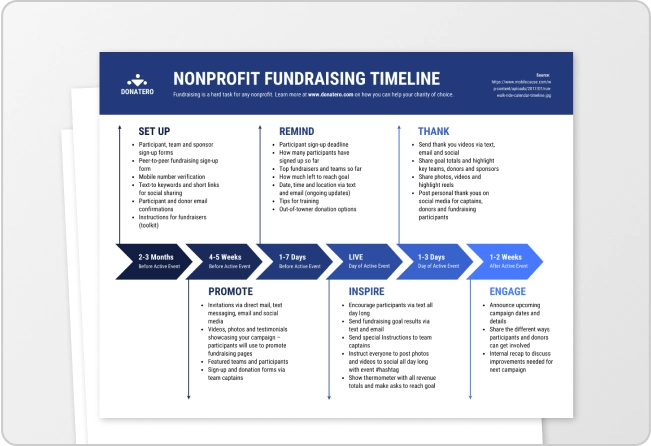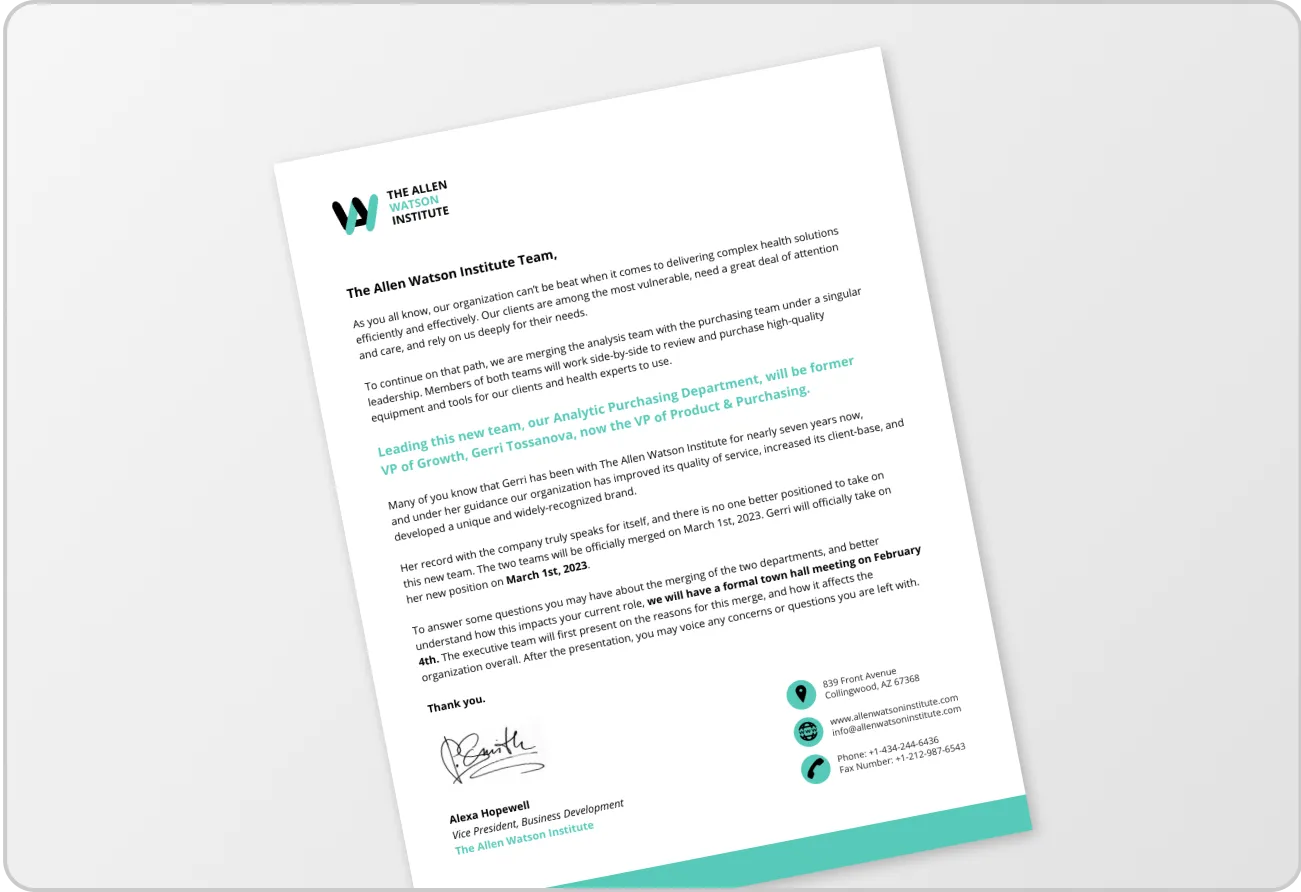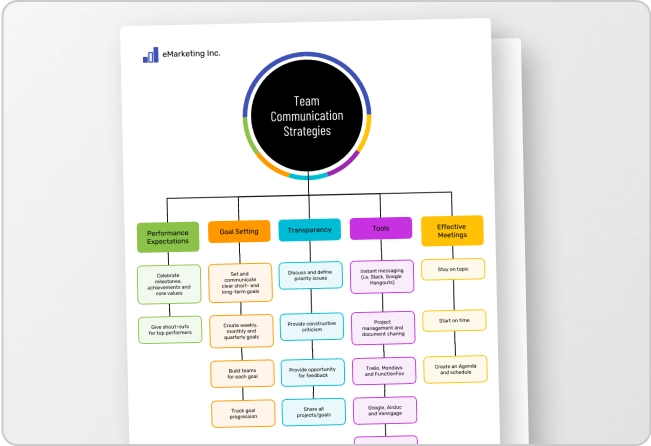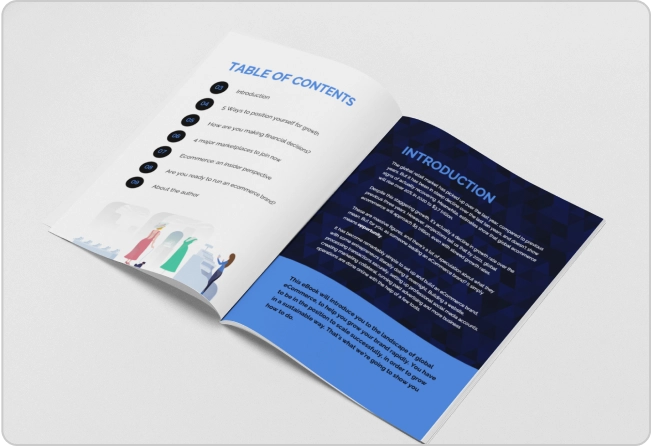
HubSpot making headlines isn’t new. But when the company makes headlines about losing 80% of its organic traffic, it perks up everyone’s ears.
Google’s frequent algorithm updates have caused significant traffic losses, with G2 (65% decline), Contently (97% decline), and ZoomInfo (76% decline) among the hardest hit.
If your brand has witnessed a sudden drop in your organic traffic or a rapid decline in conversions — know that it’s not just you.
And creating high-quality, engaging content is now more crucial than ever. AI-powered design tools can help.
Visuals are the secret weapon in modern marketing
One section of the marketing world is quick to judge that this is the death of search engine optimization (SEO) as we know it. But others — more sensible voices — think that marketing is evolving to the new norms of customer behavior.
What exactly do you need to do to meet these norms? Nobody knows for sure. But when we lean on data, it’s clear that brands that prioritize user experience for overly-optimized content are leading the race.
This is definitely not new but overlooked. Take for example the step-motherly treatment that visuals get in marketing. Brands always perceive design and visuals to be nice-to-haves — never as must-haves.
SEO might be constantly evolving, but visuals have proven to be the most reliable tool to drive user engagement and growth. If you think that visuals are just window-dressing props for your website, this post aims to break that myth.
It argues, backed with data, that visual design is the most important aspect of good user experience. And we aren’t just talking about SEO. Strategically placed visuals have the untapped potential to improve brand reputation, drive conversions and increase customer loyalty.
Over the years, Venngage has helped several brands meet their business goals through easy-to-make infographics and other visuals. You can read about some of our case studies here.
This time, we spoke to business leaders and brand strategists who strategically incorporated visuals in their marketing and got spectacular results.
If you aren’t sure where or how to fit visuals in your marketing strategy yet, you’ll get a ton of ideas from their stories.
Winning by design: How these 6 brands used visuals to get results
HubSpot’s CEO Yamini Rangan says that “leadership is never static.” Instead, it requires you to adapt, switch contexts and adjust styles to meet every new challenge.
And the experts we interviewed for this post did exactly that. Rather than blaming external market forces for hindering their brands’ growth, they took the reins and implemented proactive measures to drive their brands forward.
How? By design — quite literally. Read on to understand how each of these leaders leveraged visuals in some shape or form to overcome the challenges in their own way.
Textdrip uses visuals to build a cohesive brand identity
Textdrip is a Michigan-based automated SMS marketing platform that helps small and medium-sized businesses (SMBs) improve sales through text messages.
Founded in August 2020, Textdrip has acquired 7000+ customers in a short span of time. Despite being a 34-member team, they have done what other players in the niche took years to achieve.
However, Textdrip faced challenges that most fast-growing companies encounter — inconsistent branding across its customer touchpoints.
People who visited their website and signed up for the newsletter saw one design but received an email that felt like it was from a different brand.
Phil Portman, the company’s founder and CEO, says that it was like meeting two versions of Textdrip — one felt clean and professional and another seemed rushed and disjointed.
The misalignment between internal teams was the reason for the lack of a unified visual identity. And they feared that this would have a grave business impact on their brand recognition, low customer engagement and lack of customer trust.
Portman and his team realized that they needed to adopt a structured visual communication approach across all channels.
The marketing team launched the brand refinement process and created a brand style guide that outlined how they wanted to be presented as a brand.

Related: How To Create Brand Style Guidelines
Once they launched the guide, Textdrip started creating a mix of infographics, social media graphics, branded templates, presentations and product images that aligned with their core messaging.
Each of these design formats played a role in helping Textdrip create a cohesive brand identity. For instance, they used:
- Infographics to simplify complex data in blogs, emails and customer success communication.
- Branded and high-quality social media graphics across ads and social posts to improve brand recognition and drive engagement.
- Branded templates in client reports, presentations and internal communications to establish brand identity.
- Custom-designed screenshots, mockups, short videos and product images to showcase Textdrip’s interface in action and to drive adoption.
- Modern typography to improve readability and a mix of blue, black and white color palettes to reinforce brand recall across all touchpoints.
According to Portman, the results of this exercise were tremendous. Textdrip saw a 20% jump in their social media engagement within just three months of launching the campaign. That’s not all. Textdrip also saw:

Inconsistent branding made us feel like two different companies — visual communication unified our identity, boosted engagement and turned confusion into clarity.
Philip Portman, CEO
HARO agency’s client lands $2.5 m with visual-first approach
HARO Links Builder is a digital marketing company that helps brands improve their search engine rankings through high-authority backlinks.
But this one time, when a client from the SaaS domain reached out to them for help, they took a creative route — pun intended.
The client complained of a high customer churn rate because they had over 20 pages of product documentation. It was, understandably, too technical for new users to process. They also juggled to manage high support traffic because of their cumbersome onboarding process. And you can’t blame the users, it’s what they do when they can’t figure out how to use even the basic features on their own.
On top of their usual link-building services, the HARO Links Builder helped the client integrate a wide range of visual designs in their marketing strategy:
- Interactive step-by-step visual guides for smooth customer onboarding.
- Infographics to translate technical product documentation into easy-to-understand walkthroughs.
- Branded visuals to leverage their data in building a compelling marketing narrative.
- Data visualization dashboards to track their product usage data and customer engagement.
According to Sheraz Ali, HARO agency’s founder, these visuals helped the client simplify complex data and improve engagement.
The agency’s designers, UX specialists and data analysts worked closely with the client’s product team to maintain brand consistency across the visual assets.
And the effort made a visible difference. The clients reported:

But the unexpected (and perhaps the best) outcome came in the form of $2.5 million in funding — thanks to the data visualization dashboards they created to capture their business metrics.
The power of visual communication isn’t in making things look attractive — it’s in making complex information accessible, actionable and impactful.
Sheraz Ali, Founder of HARO Agency
Britannia School uses visuals to maximize ad ROI by 400%
Have you ever poured water into the sand and watched it disappear just as quickly? That’s how Iqbal Ahmad, Founder & CEO of Britannia School of Academics, felt when he saw his advertising money yielding only 20% in returns.
They are a UK-based teacher training school that offers accredited vocational qualifications to education professionals.
The school transitioned to a fully online platform amid the COVID-19 pandemic in 2020. They expanded their operations across the UK since they already had a solid business foundation and a Virtual Learning Environment in place.
They held internal meetings, hired a freelance marketer and launched a digital marketing campaign to improve their brand presence online. And that’s how disaster struck.
After about three months of spending over £10,000 on Google Ads, the school only generated about £2,000 in revenue.
“I was enraged at spending more than 500% of the revenue increase on marketing,” says Ahmad.
Their mistake? The ads focused too much on keywords but not on the creative design. The same held true for the landing page that the ads linked to — static, verbose and without any visuals.
Their call to action was buried in the wall of text, too.
This meant that people either didn’t click on their ads at all or bounced off if they came to one of their landing pages. Spending on these ads was like pouring water into a leaky bucket.
Ahmed and his team jumped into action and redesigned their landing pages with relevant visuals. They cut down all the fluff and balance relevant information with strategically placed visuals.
Related: 7 Tips For Using Visuals to Create Landing Pages That Convert
They used Mouseflow — a behavior analytics software — to identify content that got more attention. They doubled down on content that converted well and added relevant call-to-action buttons such as Apply Now, Enquire Now, Chat With Us or WhatsApp Chat.
Long story short, the Britannia team focused on improving the user experience and saw the conversion rates spike. Here are the before and after results from the remediation campaign:

By redesigning our landing pages with structured visuals, clear CTAs and engaging design, we turned a failing campaign into a 400% ROI success. Visual communication didn’t just improve our user experience — it completely transformed our business growth.
Iqbal Ahmad, Founder and CEO, Britannia School of Academics
Axwell’s visual pivot unlocks 25% growth in sales
Imagine what would happen if artists started using black-and-white texts to describe their art instead of painting them.
Axwell Wallet, a premium minimalist wallet brand, realized that was pretty close to what they were doing after failing to capture the craftsmanship of their wallet through static images and text-heavy descriptions.
Their products primarily cater to modern, tech-savvy millennials and Gen Z buyers who love minimalist design, functionality and everyday carry (EDC) lifestyle.
This meant their product pages lacked engagement and suffered from dismal conversion rates. Axwell’s CEO, Joel Popoff, understood that the traditional marketing route wasn’t going to cut it for them.
To keep up with its audience’s expectations, Axwell decided to shift its marketing strategy from static, text-heavy prose to short-form videos on Instagram, YouTube and TikTok.
They rejigged their marketing communication to be more visual and to appeal to the EDC niche. Axwell narrowed its marketing focus to 3 areas:

If you look at their website today, it’s a visual treat of all kinds of EDC accessories that are hard to ignore. Within 3 months of launching their new marketing campaign, Axwell knocked things out of the park:

One of their “truck test” videos on social media was so viral that it alone drove a 78% spike in product page visits in just one day.
Instead of telling people our wallets are durable, we showed them a drop test. Instead of saying they hold 12 cards, we filmed a satisfying clip of someone sliding all 12 in effortlessly. The goal was to make it impossible to scroll past without wanting to see more.
Joel Popoff, CEO
AIScreen’s visuals light up engagement by 60%
Traditional digital signage is costly, inefficient and time-consuming. They are also tough to update and hard to scale.
Nikita Sherbina, along with his two other co-founders, noticed that a lot of businesses suffered delays and lacked engagement because they had no viable alternative to traditional solutions.
The trio saw this as an opportunity and in 2018, launched AIScreen — a modern cloud-based solution that uses AI to help businesses display their digital content in real-time.
AIScreen solves the challenges traditional signage solutions posed by offering a wide variety of visual content formats for their clients:

Before AIScreen, businesses faced endless frustrations in managing their digital content. They were burdened with outdated systems, high costs and limited flexibility. We knew there had to be a smarter, easier and more cost-effective way to manage digital signage, which drove us to create AIScreen.
CEO, Nikita Sherbina
According to Sherbina, these visuals work best because they’re more engaging, update automatically and scale effortlessly. On average, the AIScreen customers report improvements across the following areas:

DWI’s secret to winning client engagement
DWI is a New York City-based ROI-focused SEO and web design and development agency that uses data, tech and creativity to get their clients noticed online. But unlike most other agencies that rely solely on technical optimization tweaks, DWI uses visuals to drive impactful SEO results.
But this wasn’t always the case. Ashot Nanayan, DWI’s Chief Marketing Officer and CEO remembers when the agency struggled to engage clients with text-heavy SEO reports and overly technical web dev strategies.
Internally, DWI teams spent too much time trying to condense key data points for client presentations — time they could be spending on result-driven tasks.
The challenge was clear: they needed to come up with a way to simplify complex concepts like backlink analysis, keyword ranking or traffic growth to win their clients’ trust.
So DWI devised a new strategy that prioritized visuals in their client communications:
- Infographics to explain SEO concepts visually.
- Social media graphics to turn technical reports into shareable content.
- Data visualizations to help their clients process the key SEO metrics.
The agency created a structured workflow for its marketing and design teams to make sure that designs were central to all their client-facing communication. And the result? They speak for themselves:

Visual communication transformed the way we present complex data — clients now grasp key insights instantly, engagement has soared and decision-making is faster. Clarity and impact have never been stronger.
Ashot Nanayan, Chief Marketing Officer and CEO
If these brands can win with visuals, so can you
Visuals, when used tactically, are more than just bells and whistles to make your brand look pretty. As the stories above show, smart visual communication can solve real business challenges and fuel growth.
Based on the stories featured above, here are 6 actionable ideas to leverage visual communication and drive business growth:
- Focus on your audience, simplicity and clarity to create engaging visuals.
- Maintain visual consistency across platforms to strengthen brand trust and recognition.
- Design compelling visuals that communicate your message and drive engagement.
- Break down complex data with visuals that make ideas easy to understand.
- Adapt visual storytelling to your audience’s evolving tastes for maximum appeal.
- Leverage automation to streamline processes and save valuable time.
Did you notice another interesting pattern about all the leaders featured in this post? None of them claim to be visual communication experts. But they leaned on visuals out of necessity for their brands.
The stories prove that with the right tools, anyone can craft ROI-focused visual strategies that get results.
If you too want to achieve outstanding results for your brand with the right visuals get started with Venngage. It’s a do-it-yourself (DIY) design platform to help you create stunning infographics, social media graphics and more — without any design skills.
Use AI to create visuals that drive results and elevate your brand.




























